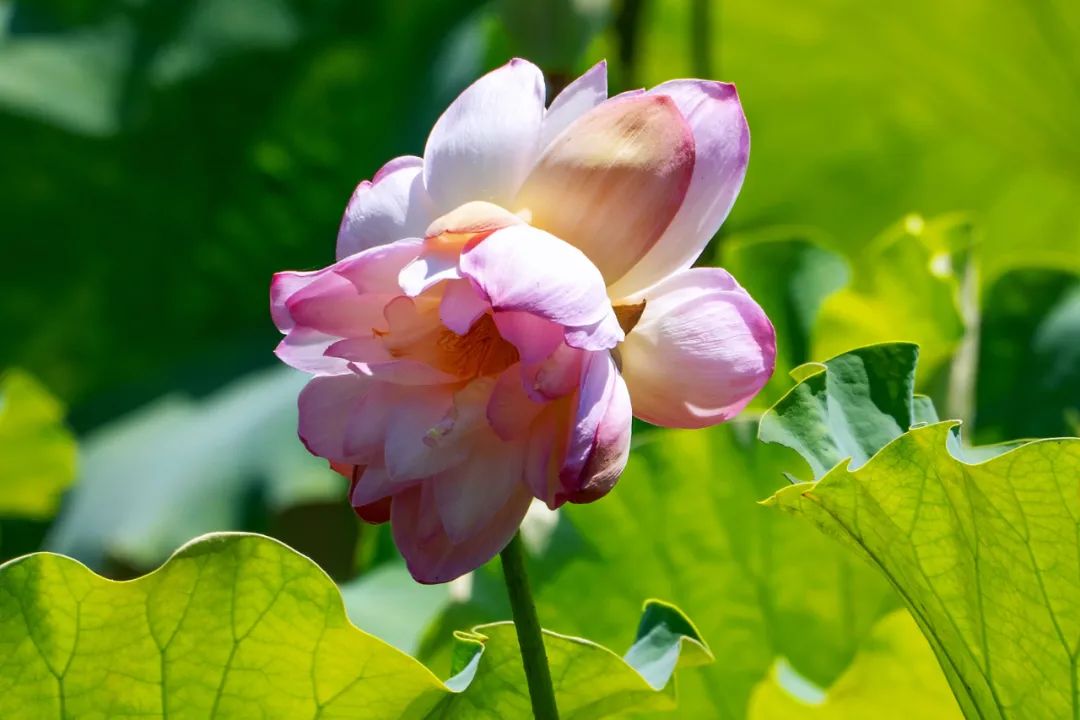Guarding the "Silk Road" and "Bo Wang" inheritance
Author:Cultural relics Shaanxi Time:2022.07.21
"Bowang" is "taking its ability to look widely." Yan Shigu in the note of "Han Book" believes that this is the proper affirmation of Emperor Hanwu's Zhang Huan's Zhang Huan, which is well -known. It is true that Zhang Jian, the Western Han Dynasty, twice the Silk Road opened by the Western Regions, which not only set up an interoperable business avenue for the ancient Asian -Europe people, but also connected the bridge of cultural exchanges between the East and the West. To this day, the spirit of the "Silk Road" pioneer is still constantly interpreted, enriched and sublimated by future generations in various forms.

During the War of Resistance Against Japan, the Archaeological Committee of the State Northwestern United University (predecessor of Northwestern University) History has performed the only formal excavation of Zhang Jian's tomb so far, and has become a sacrifice for teachers and students to sacrifice national heroes, experience loyalty to the nation, empty open, open and inclusive silk. The base of the road spirit. At the same time, this has also become the birthplace of the archeological discipline of Northwestern United University -Northwestern University.
Why did Zhang Jian make envoys in the Western Regions? What are the special significance of discovering Zhang Jian's tomb during the Anti -Japanese War? At present, how can Northwest University inherit the spirit of "Bo Wang"?
Zhang Jian goes abroad
Zhang Jian, Zi Ziwen, a native of Chenggu County, Hanzhong County (now Chenggu County, Hanzhong City, Shaanxi Province). In 138 BC, Zhang Jian worshiped the Emperor Wu of the Han Dynasty to the Western Regions in order to find the Yueyue people who were expelled from the west of the Huns. They hoped that they could persuade them to return to their homeland and the Han Dynasty to pinch the Huns together. Although this purpose was not realized in the end, Zhang Jian's trip to the Western Regions contacted the 53 countries in the Western Regions at that time, and completely opened up land transportation across Central Asia and West Asia, becoming the longest international trade channel in ancient history.
Since then, Zhang Jian has not been thousands of miles in more than 20 years, and has continuously transmitted China's advanced culture and silkworms, silk silk, iron smelting, porcelain, paper, and agricultural technology through this "Silk Road". At the same time, the Liangma, camels, instruments, magic and even Buddhist culture of the Western Regions returned to the Central Plains, becoming the first messenger to go abroad in Chinese history.

For thousands of years, on this ancient Silk Road opened by Zhang Jian, people of all countries have jointly wrote a friendly chapter of the ancient recitation through dialogue and exchanges. It can be said that Zhang Jian's contribution to the exchanges and dissemination of Chinese and foreign politics, economy, culture, and science and technology has made a contribution of no ancients. After Zhang Jian died of illness, he was sent back to his hometown city to be buried.
Highlight the national spirit
Zhangye Tomb is located in Raojiaying Village, Bo Wang Town, about 3 kilometers north of Chenggu County. "Historical Records of the Biography of Wei Qing" contains: "General Zhang Jian, died for the big bank, the mound is in Hanzhong."
In 1938, the second year of the Anti -Japanese War broke out, and the National Northwestern United University History Commission (hereinafter referred to as archeological committees), which was relocated from Xi'an to Hanzhong City to the Central Castle of Hanzhong for less than half a year (March 16, 1938). Due to the mission of the "neighborhood traces" and "archeological search, blame", under the call and host of "Northwestern Archeology" Huang Wenzheng, actively organized teachers and students to investigate and study cultural relics and historic sites in Hanzhong. Li Gu Tomb and the folk stone carvings, and the stone gate of the Zhuge Liang tomb of Mianxian.

In the process of investigating cultural relics and historic sites, the Archaeological Committee found that the tomb of Zhang Jian was severely stolen, and the stone carvings in front of the tomb also fell underground. In order to protect the precious cultural relics, it was decided to rescue and increase the "Boy Wang Hou" Zhangye Tomb.
Prior to archeological excavation, the Archaeological Committee clearly stated that Zhang Jian "developed territory, communicates culture, respects the four descent, and admires the world" is a well -known national hero in my country; It shows the significance of Zhang Jian as the spirit of the nation, and urges the Chenggu County Government to issue a notice to prohibit privately tap the tomb of Zhangye; at the same time, solemnly promise "if you find something in the future, you should be organized one by one, and you can still return to the place."
The records of the tomb unearthed from the tomb and the historical materials about the tomb of Zhang Jian, the Archaeological Committee finally determined that the tomb was indeed the tomb of Zhang Jian, "Bowanghou" in Han, and engraved in front of Zhangye's tomb. Essence The stone monument still stands on the left side of the tomb of Zhangye is not only an archeological monument, but also an inspirational monument to the Anti -Japanese War. It not only records the great cause of the prosperous hero, but also expresses the family feelings of intellectuals and national security.

After the excavation and repair of Zhangye's tomb, the Northwest United University also held exhibitions for teachers and students and the public many times. At the same time, students organized students to carry out sacrifice and sweeping activities for Zhang Jian's tomb. Raise awareness of public cultural heritage protection.
Today, the Zhangye Tomb, which has been properly kept, was composed of the site point of the "Silk Road: The Road Network of the Chang'an -Tianshan Corridor". Cangsong and cypress surrounded by cypresses, so far still play a role in rejuvenating the spirit of the nation and publicizing the opening of the outside world.
Gan is "Bo Wang"
The archeology of Zhang Jian's tomb during the Anti -Japanese War was not just an excavation research in a simple sense, but the scientific concept of protecting management and social heritage throughout the process. The discipline system of inheritance of the "Trinity" had taken shape at the time. Since then, the Department of Archeology of Northwestern University has formed an inextricable bond with the Silk Road.
Zhang Jian's main purpose of the Western Regions did his best to find Dayue Families and pinch the Huns. Two thousand years later, Professor Wang Jianxin, director of the Archaeological Center of the Northwest University, and his team, like Zhang Jian's envoys, also aimed at looking for Da Yue's. According to research, the area ruled by Da Yue's is in the south of Samalham. After 20 years of hard work, Wang Jianxin and his team pursued the footprint of the Yue people from the Hexi Corridor to Samalham, and finally confirmed the cultural relics of the ancient Yue family and Kangju recorded in the literature records such as "Historical Records" and "Hanshu". Provide empirical data and scientific basis for explaining the history of the Silk Road in Chinese discourse, and vividly interpret the patriotic feelings of intellectuals of colleges and universities in the new era.

In order to inspire more young talents to seek and pioneering and innovating with scientific thinking, spirit and attitude like Bowang Hou Zhangye, graduate students of the School of Cultural Heritage of the West University of Cultural Heritage have independently organized the "Boy Wang Youth Forum". In the two sessions, through the academic exchanges of multi -field and multi -dimensional, the forum made new contributions to cultivate archeological young talents and display the image of young archaeological students in the new era.
(Reference materials: Journal of Northwest University (Philosophy and Social Science Edition) In November 2006, Yao Yuan's "The Excavation and Repair of the Tomb of the Han Bowang Hou Zhang Hou Hou Zhang"; The Autonomous Region Museum edited "Huang Wenzhang and the Silk Road".
Text, Edit | Zhao Jianlan
School Division | Han and Tang Dynasties Three Three
Review | Yifu

- END -
In the growth of children, those invisible parenting traps

After having a child, whether the family is circulating such a dialogue every day:...
rare!Just in West Lake ...

To set the Voice of Zhejiang as an astrology, it is easier to find usSource: Hangz...